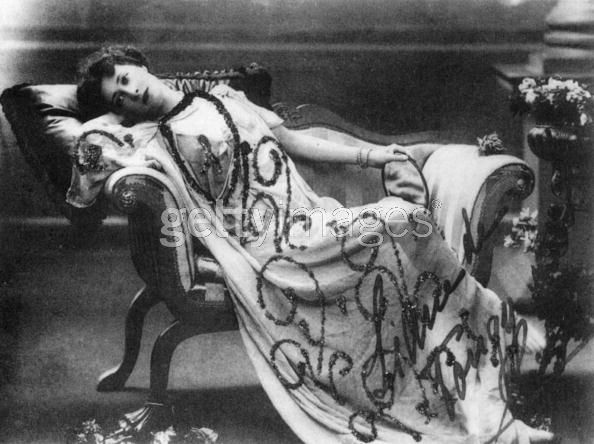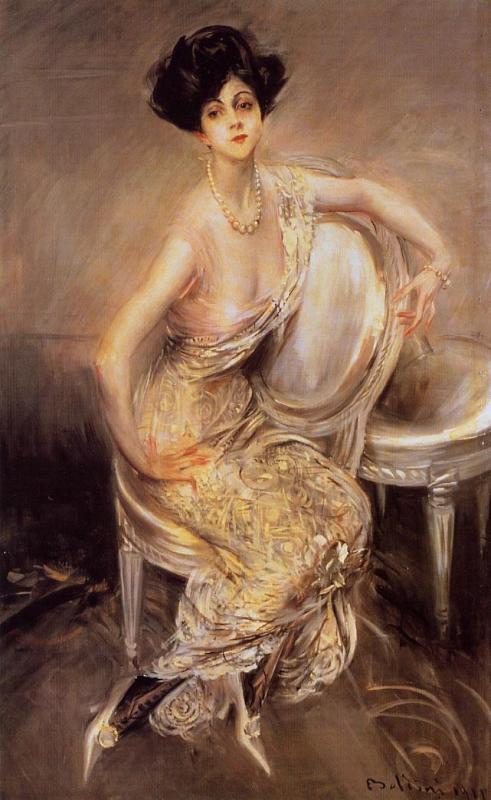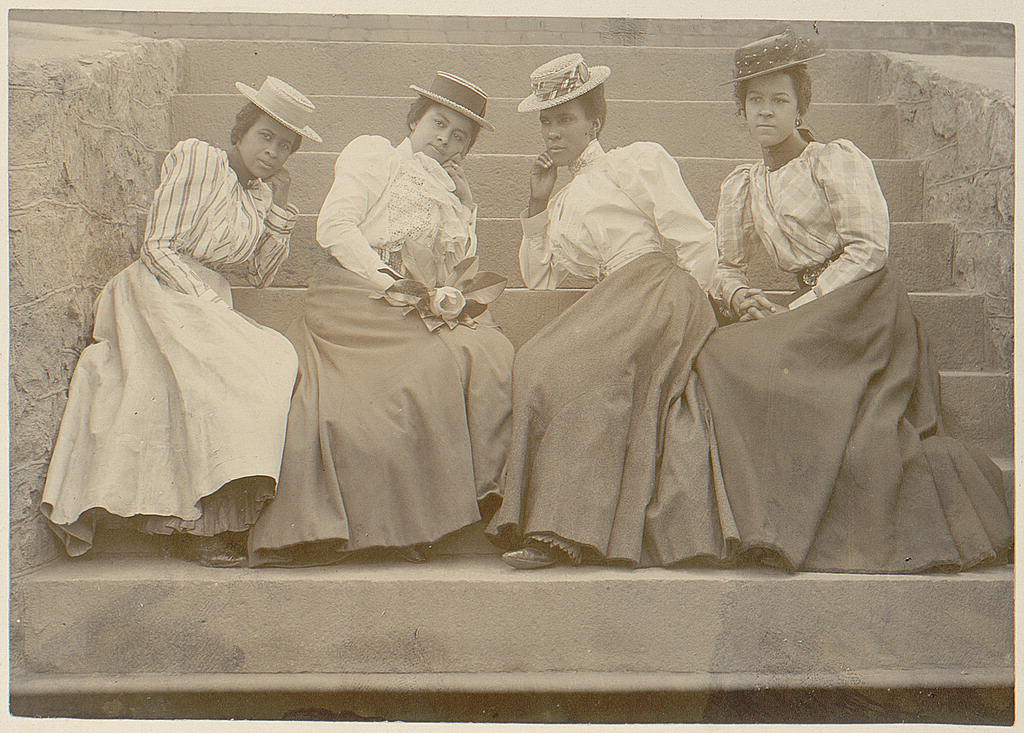
Liane de Pougy was a member of what was known as Les Grandes Horizontales–and was the most infamous of them all. During France’s Belle Epoque, the highest echelon of courtesans were considered celebrities “as firmly established as the top stars of the theatre.” They were the talk of the town, their bon mots were repeated ad nauseum, and the press recorded their every movement, their gowns, their homes, their scandals, and their lovers–and the public lapped it up.
Born Anne Marie Chassaigne, Liane was, in the light of French romantic cynicism, the perfect courtesan, having been raised in a nunnery and escaping it through marriage to a naval officer (who impregnated her in spite of the impenetrable walls of the convent) at age sixteen. In her memoirs, Liane accused her husband of abuse, and she quickly acquired an aristocratic lover, whose prowess no doubt convinced her of her aptitude for amour. She was found in bed with her marquis, whereupon her husband shot at them both. The enterprising Liane quickly and safely skipped off for Paris. After attracting the public’s attention while riding in her new lover’s carriage to watch the Grand Prix, the Folies Bergère quickly hired her to headline a short skit which was long on showcasing her beauty and short on talent. Liane cemented her career when the Prince of Wales, who happened to be in Paris the night of her debut, accepted her bold request for him to watch her performance.
Tout Paris (the smartest set) and the public were wild about her, and with Emilienne d’Alencon and La Belle Otero, Liane was considered part of “Le Grande Trois” of the top courtesans. She was sought after by the wealthiest and most aristocratic of men–and women. American heiress and writer Natalie Clifford Barney was her most ardent and scandalous of female suitors. After glimpsing Liane at the Folies Bergère, Barney presented herself to Liane in a page costume, announcing that she was a “page of love” sent by Sappho, and though Liane had primarily conducted affairs with men, Natalie’s insouciance charmed her, and their brief relationship was the inspiration for Liane’s 1901 roman à clef, Idylle Saphique (Sapphic Idyll). The book became the talk of Paris and was “reprinted at least sixty-nine times in its first year.” Barney’s wealth and fame pierced the veil of Liane’s thinly-disguised portrait of her lover, which caused Barney considerable trouble with her parents in America. However, the two had already parted ways after
was soon well known as the model for one of the characters. By this time, however, the two had already parted ways after “quarreling repeatedly over Barney’s desire to ‘rescue’ de Pougy from her life as a courtesan.”
After this, Liane moved easily between the aristocratic lesbian clique in Paris and the high-living, frenetic whirl of Tout Paris, though her vicious feud with Caroline Otero took precedence in the press. Their most infamous encounter occurred at Maxim’s, where Otero contrived to outshine Liane and made a startling entrance wearing an extremely decollete evening gown and every jewel she owned on her body. Liane had been tipped off beforehand, and she entered Maxim’s in a plain white gown and a single diamond drop at her throat. But behind her was a maid bearing a large velvet cushion on which as piled a glittering mound of her entire jewel collection.
Liane found religion in her mid-thirties, and she entered a Dominican order in Lausanne, adopting the name Sister Mary Magdalene of the Penitence. This lasted a short while, however, and she shed her veil and habit for chinchilla and diamonds–though she professed to remain devout, having a copy of The Imitation of Christ by her bedside. In 1920, Liane retired from the life of a grand horizontale forever when she wed the Romanian Prince Ghika, whose parents cut him off without a penny when they heard he was to marry a courtesan. The pair nonetheless remained happy on a country estate, with only a brief hiccup in their union before reuniting to remain together until his death. In her widowhood, Liane rejoined the Dominican order and donned her old name, veil, and habit. She became involved in the Asylum of Saint Agnes, devoted to the care of children with birth defects. Late in life she published a couple of light tales (L’Insaisissable and La Mauvaise part-Myrrhille), and after her death in 1950, her memoirs, Mes cahiers bleus (My Blue Notebooks), were published.
Further Reading
Wild Heart: A Life: Natalie Clifford Barney and the Decadence of Literary Paris by Suzanne Rodriguez
Wild Girls: Paris, Sappho, and Art: The Lives and Loves of Natalie Barney and Romaine Brooks by Diana Souhami
The Book of the Courtesans: a Catalogue of Their Virtues by Suzanne Griffin
Elegant Wits and Grand Horizontals by Cornelia Otis Skinner
La Belle Epoque: Fifteen Euphoric Years of European History by Multiple Authors



How is it possible no one’s written a novel based on this woman’s life???
She wrote her own, It is called My Blue Notebooks….a diary of her life accounts
Indeed heidenkind! And truth be told, Natalie Barney’s life was all the more intriguing!